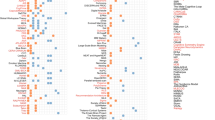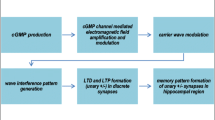Abstract
We introduce rudiments of the cognitive meta-architecture M (majuscule of \(\mu \) and pronounced accordingly), and of a formal procedure for determining, with M as touchstone, whether a given cognitive architecture \(X_i\) (from among a finite list 1 \(\ldots k\) of modern contenders) conforms to a minimal standard model of a human-level AGI mind. The procedure, which for ease of exposition and economy in this short paper is restricted to arithmetic cognition, requires of a candidate \(X_i\), (1), a true biconditional expressing that for any human-level agent a, a property possessed by this agent, as expressed in a declarative mathematical sentence s(a), holds if and only if a formula \(\chi _i(\mathfrak {a})\) in the formal machinery/languages of \(X_i\) holds as well (\(\mathfrak {a}\) being an in-this-machinery counterpart to natural-language name a). Given then that M is such that \(s(a) \text { iff } \mu (\mathfrak {m})\), where the latter formula is in the formal language of M, with \(\mathfrak {m}\) the agent modeled in M, a minimal standard modeling of an AGI-level mind is certifiably achieved by \(X_i\) if, (2), it can be proved that \(\chi _i(\mathfrak {a}) \text { iff } \mu (\mathfrak {a}).\) We conjecture herein that such confirmatory theorems can be proved with respect to both cognitive architectures NARS and SNePS, and have other cognitive architectures in our sights.
Access this chapter
Tax calculation will be finalised at checkout
Purchases are for personal use only
Similar content being viewed by others
Notes
- 1.
This example is but the tip of an iceberg of negative knowledge in the realm of mathematics for this and indeed all present and foreseeable LLMs, as Arkoudas shows/explains. Note that Bubeck et al. [8] have made the figurative claim that GPT-4 has—and we quote—“sparks of AGI.” We don’t know what this metaphorical claim means mathematically (thus confessedly find little meaning in it), but clearly by conversational implication these authors would themselves agree that while GPT-4 is an AI, it’s an AGI. If x has sparks of being an R, then x isn’t an R—this is the principle at the root of the implication here.
- 2.
We shall not spend the considerable time that would be needed to list the (countably infinite) axioms, and explain them. Readers can consult the elegant [9] for nice coverage of PA (and illuminating commentary on this axiom system). There are theories of arithmetic even simpler than PA, because PA includes an axiom relating to mathematical induction, and the simpler systems leave this axiom aside. For example, readers unfamiliar with mathematical induction can, if motivated, consult the induction-free theory of arithmetic known as ‘Robinson Arithmetic,’ or sometimes just as ‘Q;’ for elegant coverage, see [5].
- 3.
The formula in the case of M itself is
$$\mu (\mathfrak {m})\,{:}{=}\,{\texttt {(believes!}\ \texttt {m}\ \texttt {t}\ \texttt {(=}\ \texttt {(+}\ \texttt {(s}\ \texttt {(s}\ \texttt {0))}\ \texttt {(s}\ \texttt {(s}\ \texttt {0)))}\ \texttt {(s}\ \texttt {(s}\ \texttt {(s}\ \texttt {(s}\ \texttt {0))))))}},$$where s is the successor function and 0 is primitive, but technical details regarding M are outside of current scope.
- 4.
The kernel of the procedure just described was first adumbrated in [4].
- 5.
We conjecture that the set of all of these architectures is pairwise inconsistent, but leave this disturbing prospect aside for subsequent investigation via M.
- 6.
We hold that confidence is irrelevant here as it is a temporal property which only impacts how likely the system is to change its mind, which has use for nonmonotonic reasoning but is irrelevant to our current deduction-only explorations.
- 7.
Additionally we could proceed by providing any number of experiences that allow the system to derive 2 + 2 = 4 as long as they allow the system to derive 2 + 2 = 4 with frequency 1.
- 8.
Cognitive calculi build off of the notion of traditional logical systems, which consist of a formal language \(\mathscr {L}\), a set of inference schemata \(\mathscr {I}\), and a formal semantics \(\mathscr {S}\). The most notable distinguishing factors of cognitive calculi are (1) they contain modal operators for mental states, e.g., perception, belief, obligation; and (2) they contain no model-based semantics; instead the semantics of formulae are purely inference-theoretic. That is, the semantics are expressed exclusively through the inference schemata \(\mathscr {I}\). For a longer exposition of exactly what a cognitive calculus is and isn’t, we refer the interested reader to Appendix A of Bringsjord et al. [7].
- 9.
Abductive and inductive reasoning in NARS have the resulting frequency of the conclusion depend on confidence values influenced by a system parameter; as this can be arbitrary, this will not guarantee the preservation of frequency of 1 for conclusions using these modes of reasoning; thus only deductive reasoning applies here.
- 10.
- 11.
Some readers of earlier drafts of the present paper have asked us whether our procedure can be applied not just to cognitive architectures, but to artificial agents in general—for instance to the LLM agents in today’s headlines. This question, alas, is at once tricky and straightforward. If the question is about pure LLMs, the question is straightforward, and easily answered in the negative, since cognitive attitudes directed at declarative content qua declarative content within the theory of elementary arithmetic (the full closure of PA under standard first-order deduction) cannot exist in such a system, which operates exclusively over data derived by tokenizing and vectorizing etc. away from quantifier-rich formula. Things become tricky when one sees that LLMs are increasingly getting “glued” to outside intelligent systems that have been engineered to handle logic-based data and to reason in accordance with inference schemata that have since Aristotle been devised for processing such data.
References
Anderson, J.: Formal semantics of ACT representations. In: Language, Memory, and Thought, pp. 220–251. Lawrence Erlbaum Associates, Hillsdale (1976)
Andréka, H., Madarász, J.X., Németi, I., Székely, G.: A logic road from special relativity to general relativity. Synthese 186, 633–649 (2012). https://doi.org/10.1007/s11229-011-9914-8
Arkoudas, K.: ChatGPT is no stochastic parrot. But it also claims that 1 is greater than 1. Philos. Technol. (forthcoming)
Bello, P., Bringsjord, S.: Two problems afflicting the search for a standard model of the mind. In: The 2017 Fall Symposium Series, Technical Reports FSS-17-01-FSS-17-05, pp. 296–301. Association for the Advancement of Artificial Intelligence, Palo Alto (2017). http://kryten.mm.rpi.edu/pb_sb_aaaifs2017_final.pdf. This paper specifically appears in Technical Report A Standard Model of the Mind, Laird, J., Lebiere, C., Rosenbloom, P. (eds.) A preprint of the paper can be obtained via the URL given here
Boolos, G.S., Burgess, J.P., Jeffrey, R.C.: Computability and Logic, 4th edn. Cambridge University Press, Cambridge (2003)
Bringsjord, S., Hendler, J., Govindarajulu, N.S., Ghosh, R., Giancola, M.: The (uncomputable!) meaning of ethically charged natural language, for robots, and us, from hypergraphical inferential semantics. In: Ferreira, M.I.A., Tokhi, M.O. (eds.) Towards Trustworthy Artificial Intelligent Systems. ISCA, vol. 102, pp. 143–167. Springer, Cham (2022). https://doi.org/10.1007/978-3-031-09823-9_11. http://kryten.mm.rpi.edu/UncomputableNLURobots032421.pdf
Bringsjord, S., Govindarajulu, N., Giancola, M.: Automated argument adjudication to solve ethical problems in multi-agent environments. Paladyn J. Behav. Robot. 12, 310–335 (2021). http://kryten.mm.rpi.edu/AutomatedArgumentAdjudicationPaladyn071421.pdf
Bubeck, S., et al.: Sparks of artificial general intelligence: early experiments with GPT-4 (2023). arXiv:2303.12712v3
Ebbinghaus, H.D., Flum, J., Thomas, W.: Mathematical Logic, 2nd edn. Springer, New York (1994). https://doi.org/10.1007/978-1-4757-2355-7
Gall, D., Frühwirth, T.: A formal semantics for the cognitive architecture ACT-R. In: Proietti, M., Seki, H. (eds.) LOPSTR 2014. LNCS, vol. 8981, pp. 74–91. Springer, Cham (2015). https://doi.org/10.1007/978-3-319-17822-6_5. http://www.informatik.uni-ulm.de/pm/fileadmin/pm/home/fruehwirth/drafts/act_r_semantics.pdf
Goldfain, A.: A computational theory of early mathematical cognition. Ph.D. thesis, State University of New York at Buffalo (2008)
Halpern, J., Harper, R., Immerman, N., Kolaitis, P., Vardi, M., Vianu, V.: On the unusual effectiveness of logic in computer science. Bull. Symb. Log. 7(2), 213–236 (2001)
Hutter, M.: Universal Artificial Intelligence: Sequential Decisions Based on Algorithmic Probability. Springer, Heidelberg (2005). https://doi.org/10.1007/b138233
Kissinger, H., Schmidt, E., Huttenlocher, D.: ChatGPT heralds an intellectual revolution. Wall Street J. (2023). The rather lengthy subtitle of this article reads: “Generative AI presents a philosophical and practical challenge on a scale not experienced since the start of the Enlightenment”
Kotseruba, I., Tsotsos, J.K.: A review of 40 years of cognitive architecture research: core cognitive abilities and practical applications. Artificial Intelligence. arXiv (2016)
Laird, J., Lebiere, C., Rosenbloom, P.: A standard model of the mind: toward a common computational framework across artificial intelligence, cognitive science, neuroscience, and robotics. AI Mag. 38(4), 13–26 (2017). https://doi.org/10.1609/aimag.v38i4.2744
Lakoff, G., Nuñez, R.: Where Mathematics Comes From: How the Embodied Mind Brings Mathematics into Being. Basic Books, New York (2000)
Lovett, A., Bridewell, W., Bello, P.: Selection, engagement, & enhancement: a framework for modeling visual attention. In: Proceedings of the 43rd Annual Conference of the Cognitive Science Society, pp. 1893–1899. Cognitive Science Society, Vienna (2021)
McKinsey, J., Sugar, A., Suppes, P.: Axiomatic foundations of classical particle mechanics. J. Ration. Mech. Anal. 2, 253–272 (1953)
Patel-Schneider, P.F.: Undecidability of subsumption in NIKL. Artif. Intell. 39(2), 263–272 (1989)
Schmidt-Schauß, M.: Subsumption in KL-ONE is undecidable. In: KR 1989, pp. 421–431 (1989)
Shapiro, S.: SNePS: a logic for natural language understanding and commonsense reasoning. In: Iwanska, L., Shapiro, S. (eds.) Natural Language Processing and Knowledge Representation: Language for Knowledge and Knowledge for Language, pp. 175–195. AAAI Press/MIT Press, Menlo Park (2000)
Shapiro, S.C., Bona, J.P.: The GLAIR cognitive architecture. In: Biologically Inspired Cognitive Architectures II: Papers from the AAAI Fall Symposium (2009)
Simpson, S.: Subsystems of Second Order Arithmetic, 2nd edn. Cambridge University Press, Cambridge (2010)
Wang, P.: Non-Axiomatic Logic. World Scientific (2013). https://doi.org/10.1142/8665. https://www.worldscientific.com/doi/abs/10.1142/8665
Wang, P.: Perception in NARS. Technical report (2018). https://cis.temple.edu/tagit/publications/PAGI-TR-7.pdf
Wigner, E.: The unreasonable effectiveness of mathematics in the natural sciences. In: Communications in Pure and Applied Mathematics, vol. 13, pp. 1–14. Wiley, New York (1960)
Wolfram, S.: What Is ChatGPT Doing ...and Why Does It Work? Stephen Wolfram - Writings, 14 February 2023. https://writings.stephenwolfram.com/2023/02/what-is-chatgpt-doing-and-why-does-it-work
Acknowledgments
We are grateful to two anonymous reviewers for their helpful feedback, to Paul Bello for insights regarding whether the search for a standard model of the (human) mind can bear fruit in light of the computationally resistant nature of consciousness, and to ONR (Award # N00014-22-1-2201) for partial support of the research reported herein.
Author information
Authors and Affiliations
Corresponding author
Editor information
Editors and Affiliations
Rights and permissions
Copyright information
© 2023 The Author(s), under exclusive license to Springer Nature Switzerland AG
About this paper
Cite this paper
Bringsjord, S., Oswald, J.T., Giancola, M., Rozek, B., Govindarajulu, N.S. (2023). The M Cognitive Meta-architecture as Touchstone for Standard Modeling of AGI-Level Minds. In: Hammer, P., Alirezaie, M., Strannegård, C. (eds) Artificial General Intelligence. AGI 2023. Lecture Notes in Computer Science(), vol 13921. Springer, Cham. https://doi.org/10.1007/978-3-031-33469-6_7
Download citation
DOI: https://doi.org/10.1007/978-3-031-33469-6_7
Published:
Publisher Name: Springer, Cham
Print ISBN: 978-3-031-33468-9
Online ISBN: 978-3-031-33469-6
eBook Packages: Computer ScienceComputer Science (R0)




